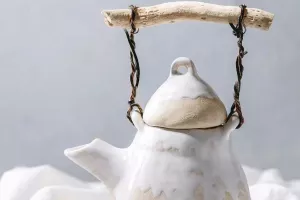Swan symbolism has a long history of representing beauty, grace, love, passion and protection. This bird is also a symbol of gracefulness, song, music, poetry and creativity. These beautiful birds are connected to the sun. They symbolize light and all that is good. Swans are a symbol of pure love.
Swans make frequent appearances in literature. One of the most famous stories in children’s literature is “The Ugly Duckling” by Hans Christian Andersen. The story is about a cygnet who thinks he is an unattractive duckling but grows into a beautiful and graceful swan.
Andersen also wrote “The Wild Swans”. This tale features an evil stepmother who turned her stepsons into swans. They carry away their sister to save her. The sister is mute but spends her days knitting shirts from nettles. She is about to be burned at the stake as a witch when her brothers descend from the sky and save her. They don the magic nettle shirts and turn into human form. Their sister regains her speech and all live happily ever after.
In 1848, the white swan became the hero of Wagner’s opera Lohengrin and other tales of the swan knight. Similarly, in 1876, Tchaikovsky’s ballet, Swan Lake, depicted feminine softness, beauty, and grace.
In Roman mythology, the swan symbol is connected to Aphrodite’s beauty as well as with Apollo – the God of poetry, prophecy, and music. There is a Greek fable which tells us about the swans’ last unearthly song as they die, which tie them up to poetry as well as death.
Bird symbolism was integral to Native American cultures and tribes. Ceremonial fans made from bird feathers played an important role in Native American medicine, healing, magic, and rituals. The swan was very sacred to the Natives, and they used its feathers to make ceremonial fans, cloaks, and feather jewelry. The elders in the tribes always narrated swan mythology legends of different animals and birds to depict the messages these animals/birds portrayed. This knowledge was passed on to the younger generations. Accordingly, the swan represented the North Direction and was also the first Power of Creation, which is the Wind.
In many Celtic myths, the swan represents the beneficent and healing power of the sun. There is also a story of children of Lir being turned into swans – which reminds us of those Celtic myths always have affinities to fairy tales and shapeshifting.
The name swan comes from an Indo-European word meaning “to sing” or “song.” Also, from Irish mythology comes the legend of the four children of Llyr, who were transformed into swans by their father’s second wife, Aoife.
In many Gaelic and Irish tales, swans appear as messengers. Their message is mainly of love, and they speak of the love that already exists within each of us.
Greek mythology shares the story of Leda and the swan. This story recounts the conception of Helen of Troy by the Queen of Sparta and Zeus, disguised as a swan. This myth was expressed powerfully by W.B. Yeats in his poem “Leda and the Swan”. Yeats also wrote “The Wild Swans at Coole” which expressed his search for lasting beauty in a changing world where beauty was temporary.
In Norse mythology, two swans drink from the Well of Urd. The water is so pure that the swans turn white, as do all their descendants.
The Nicaraguan poet Ruben Dario used the swan as inspiration. His most famous poem perhaps is “Coat of Arms”. His use of the swan made it the symbol of the Modernismo poetic movement.


